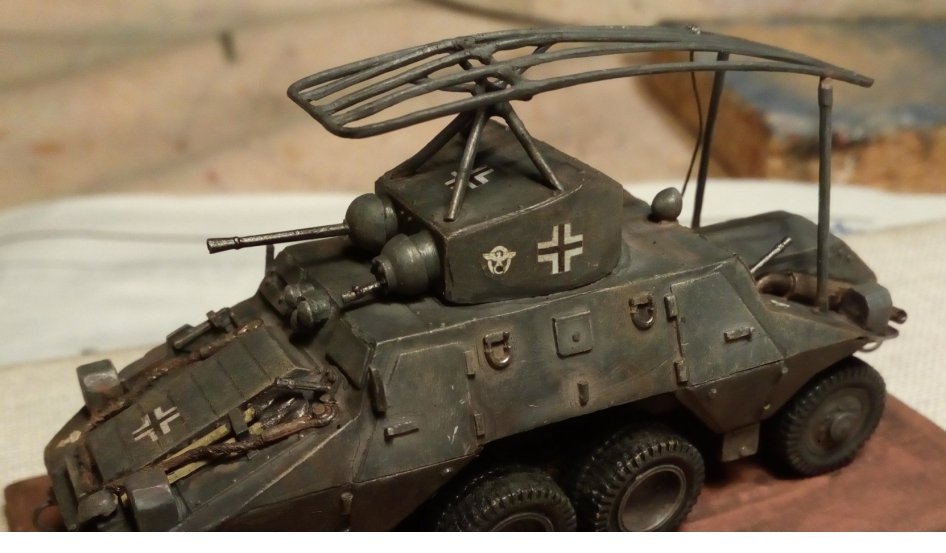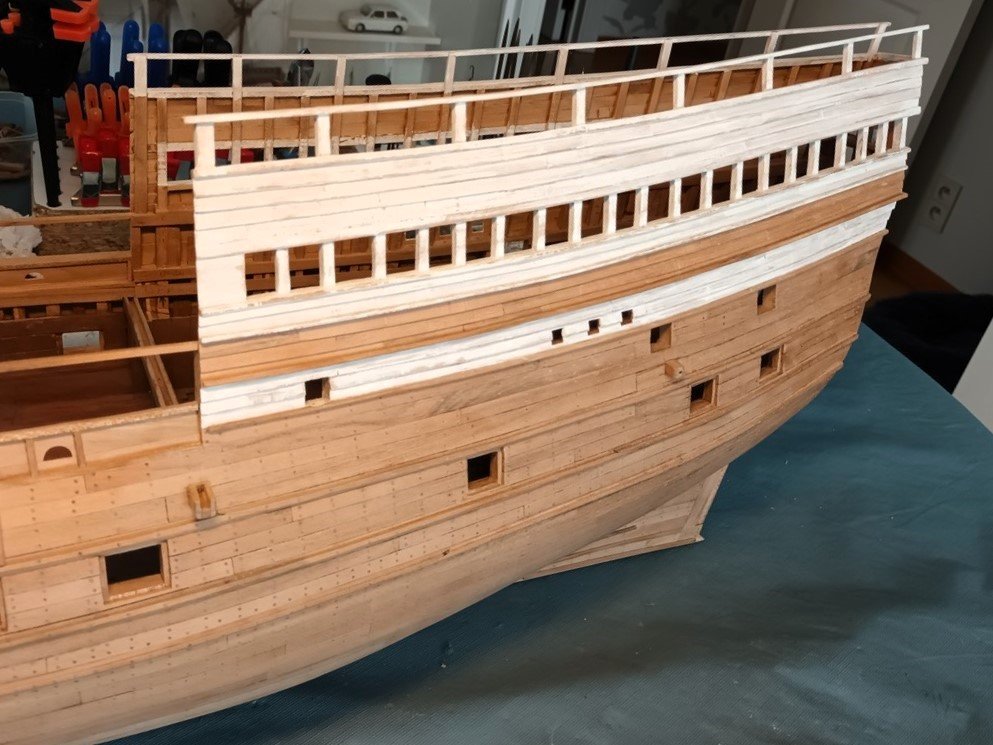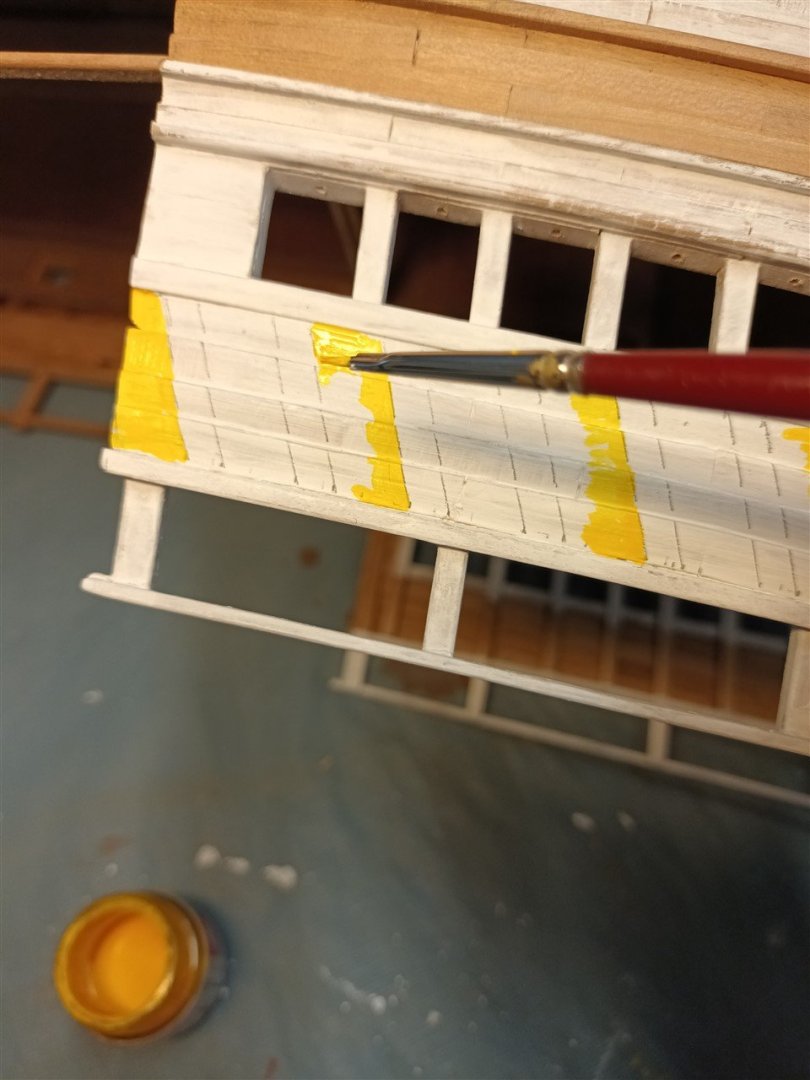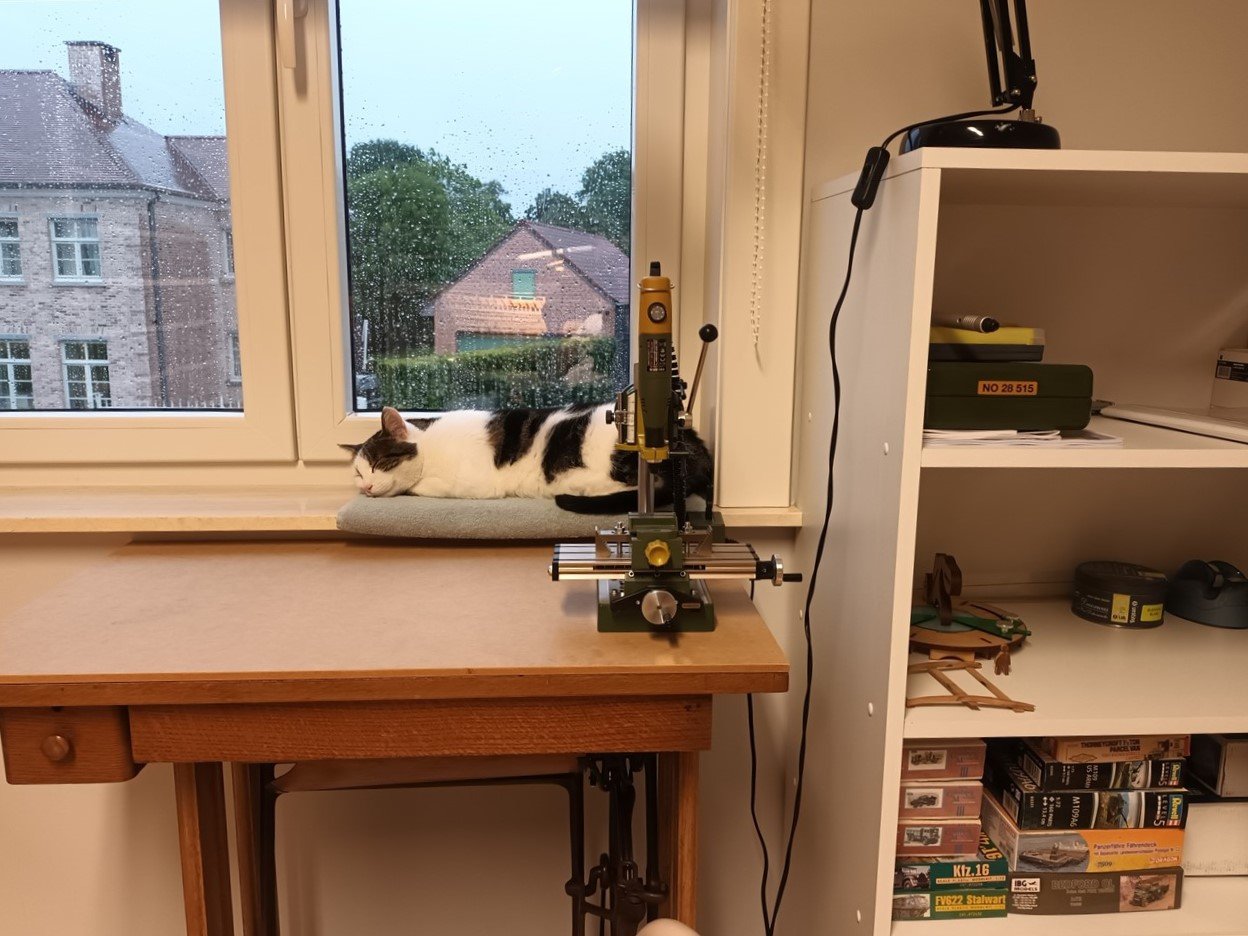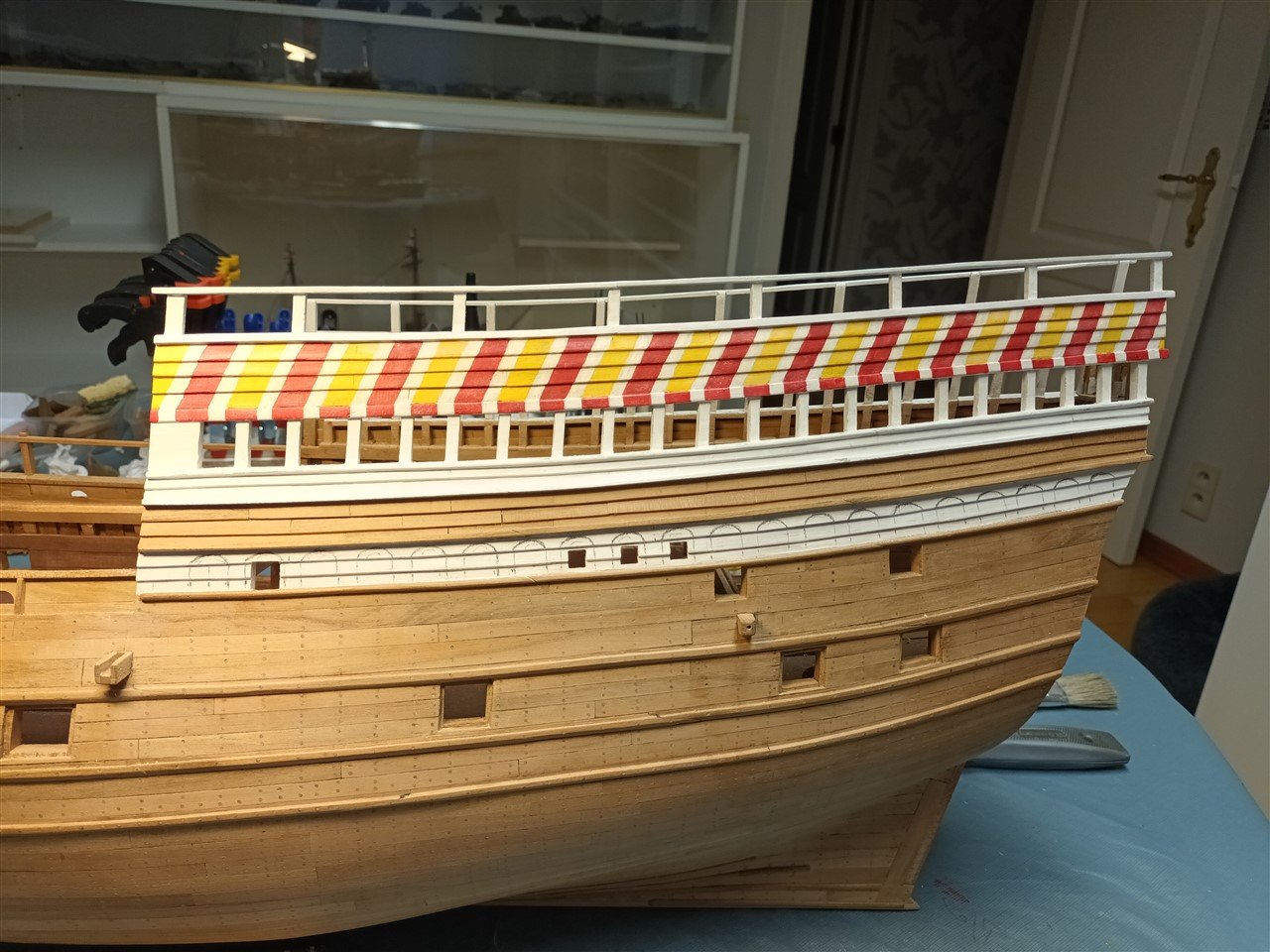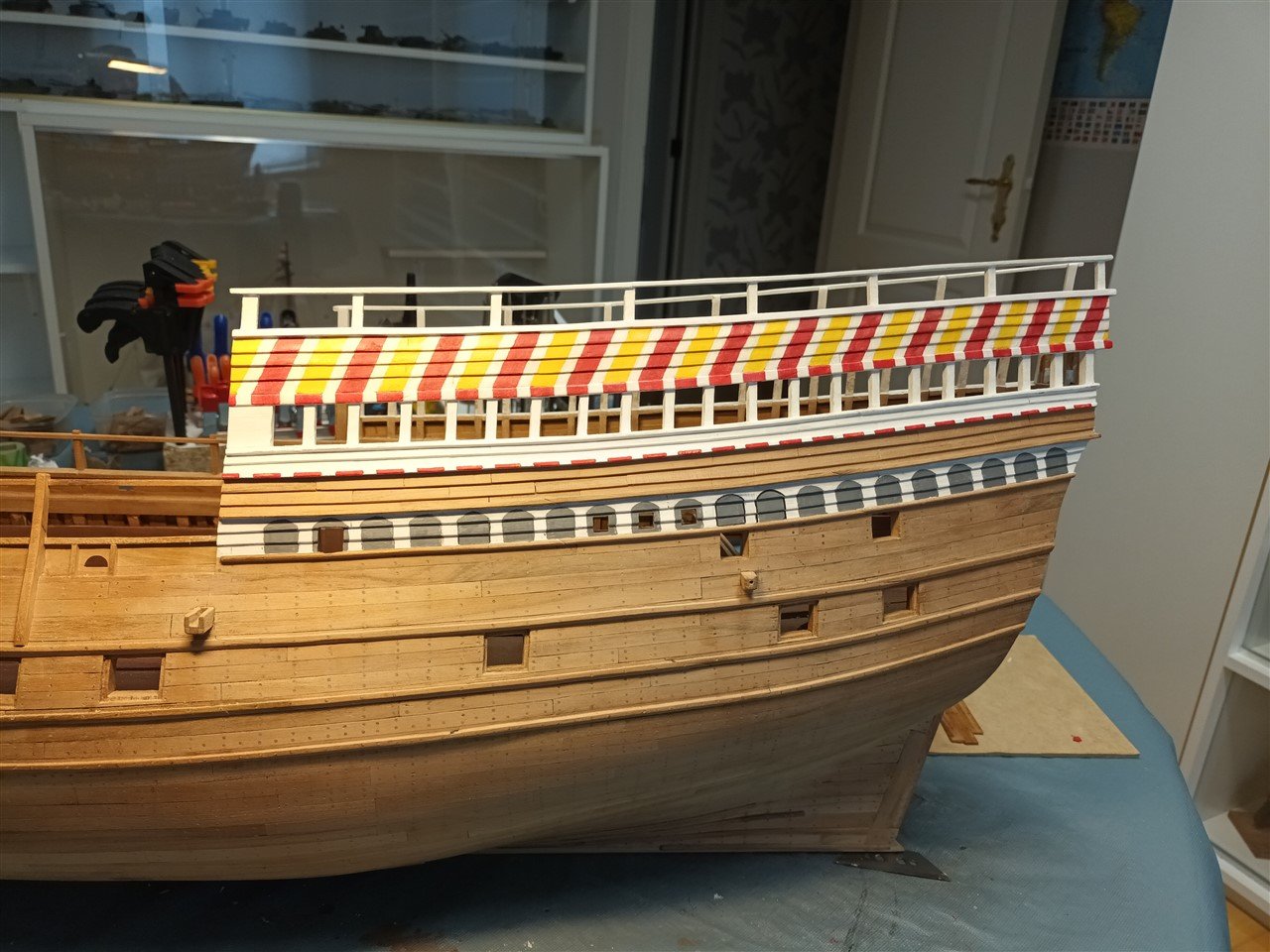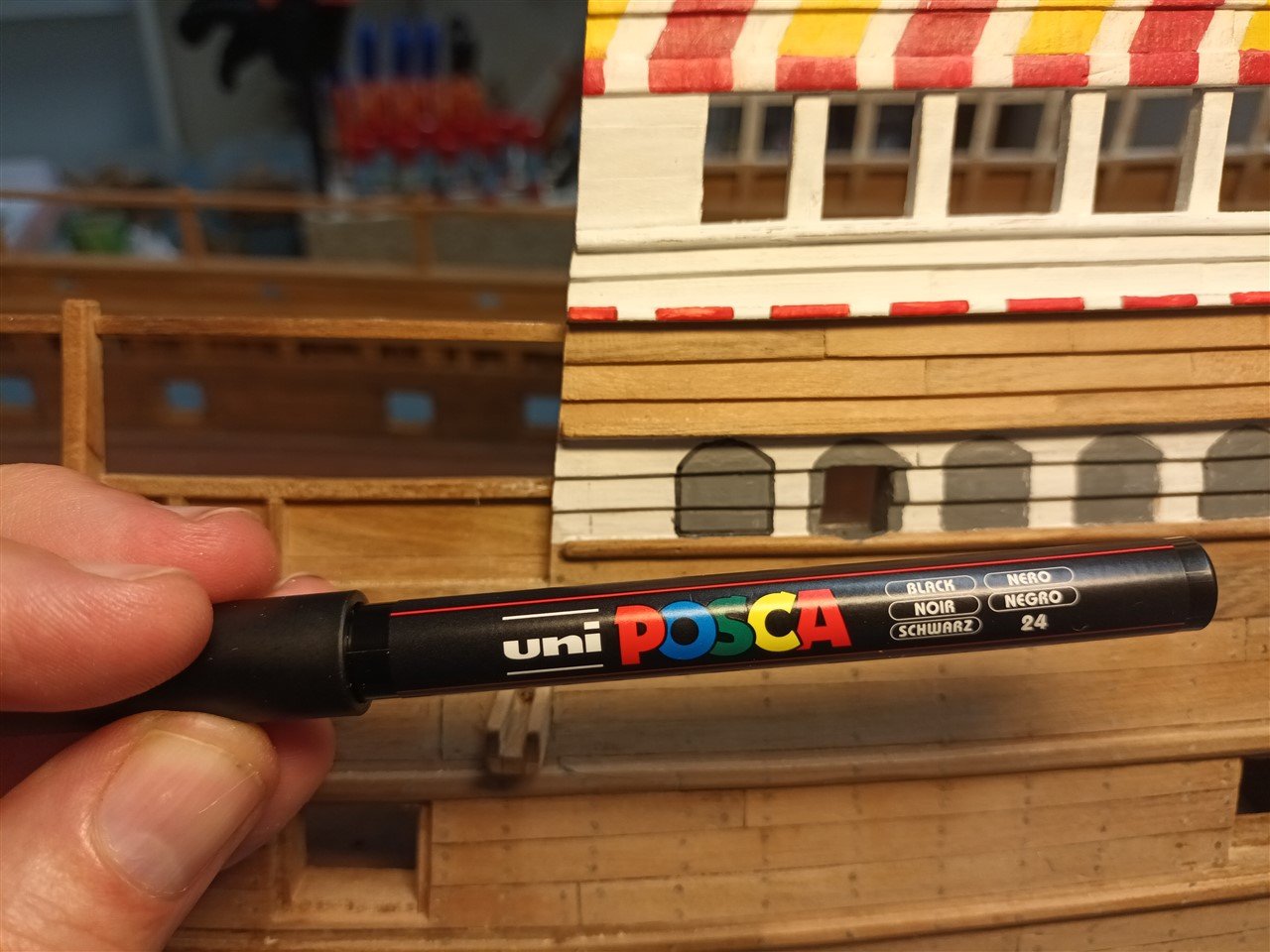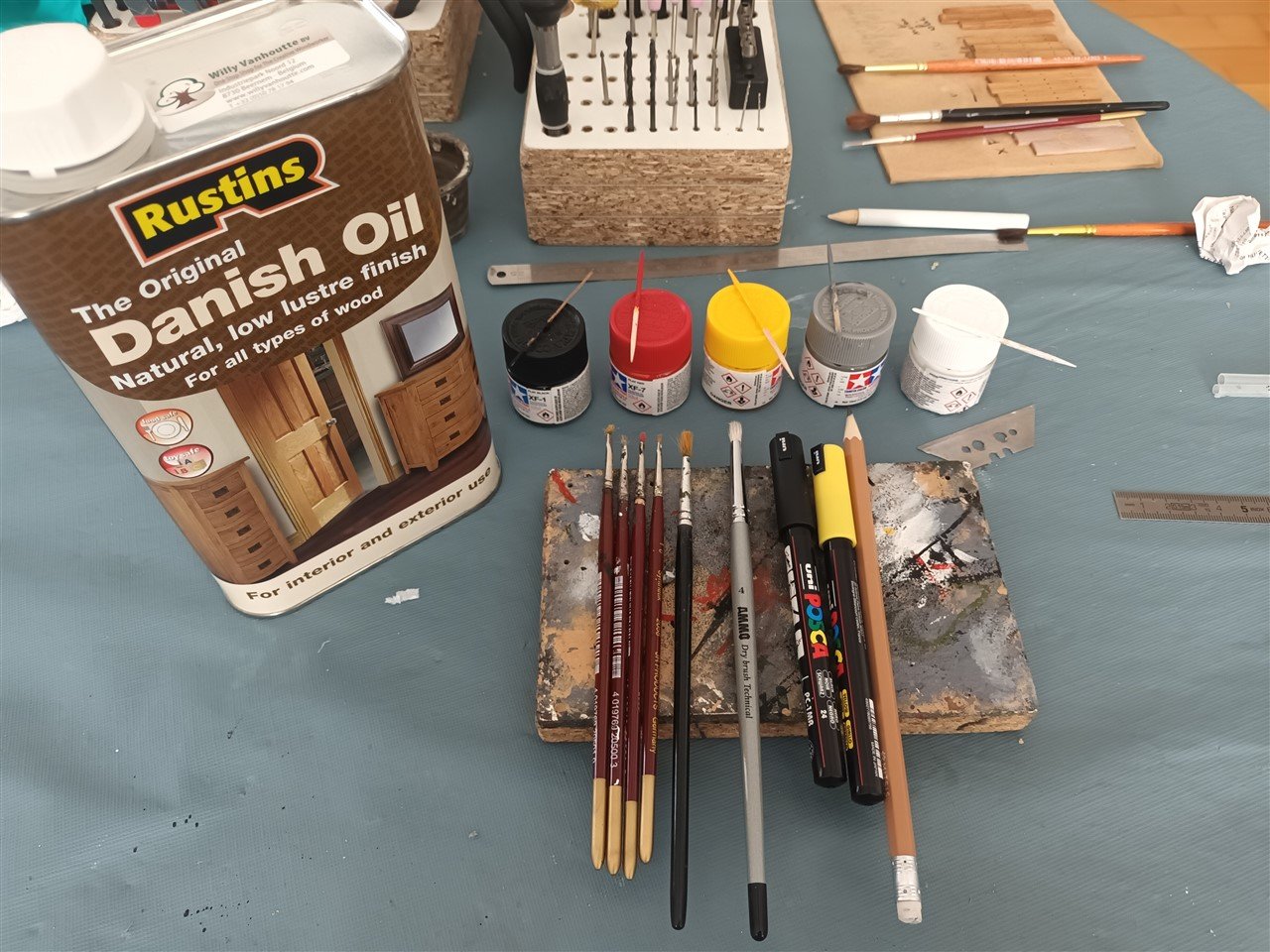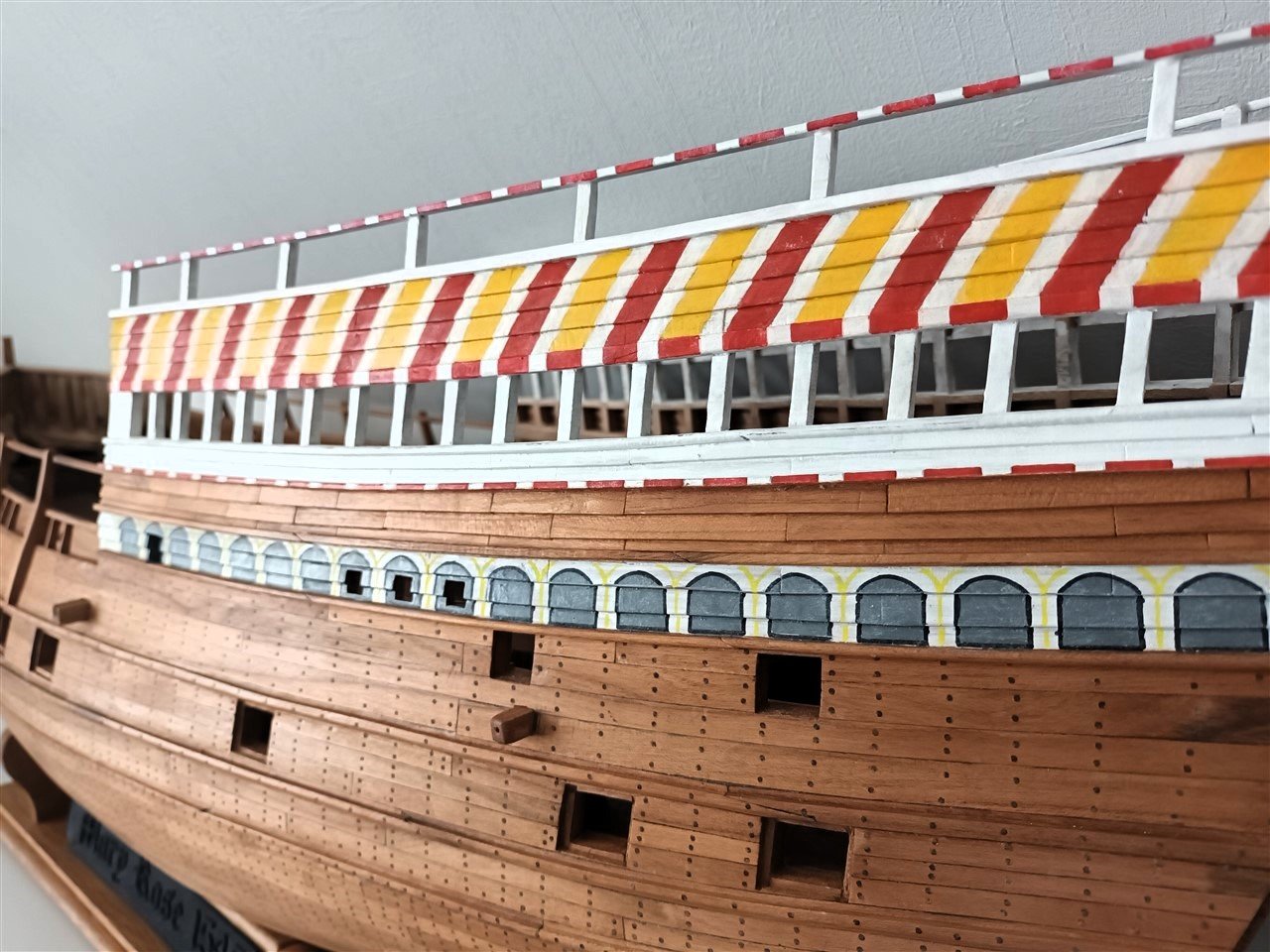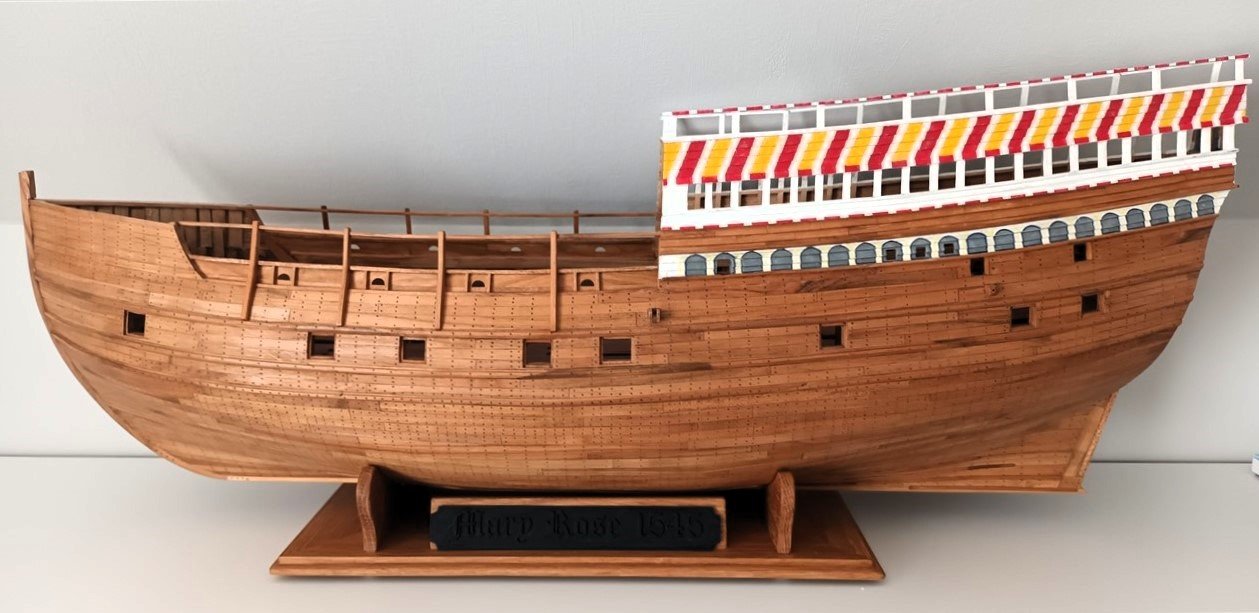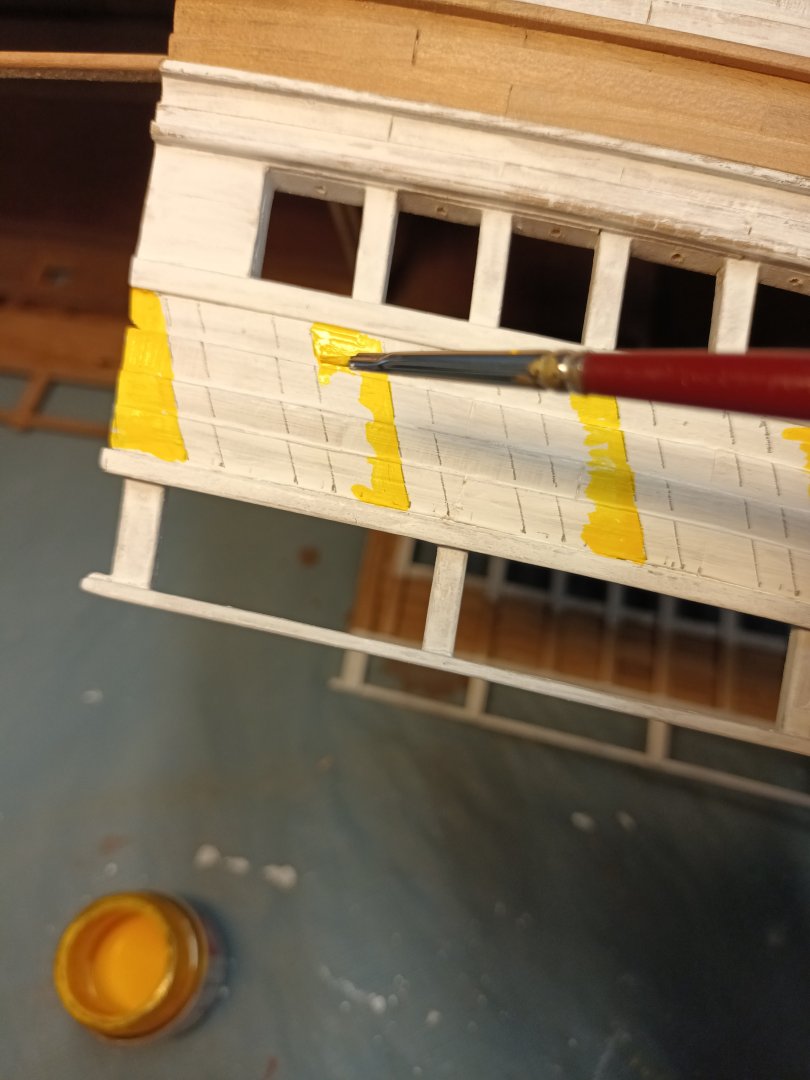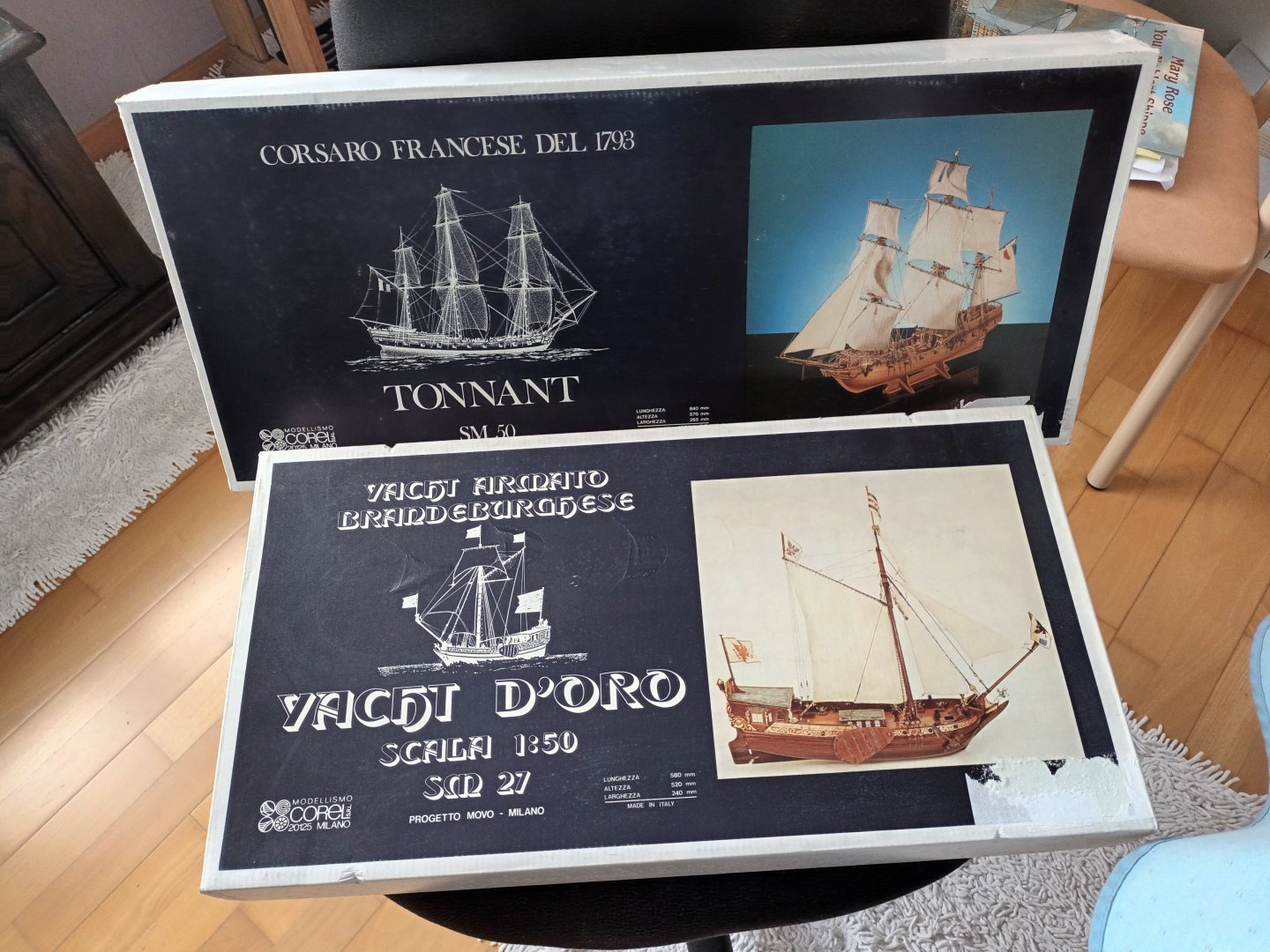-
Posts
4,280 -
Joined
-
Last visited
Content Type
Profiles
Forums
Gallery
Events
Everything posted by Baker
-
First of all, thanks for following, likes, and the nice comments. Vacation over, so back to work on Mary (some of us). As mentioned before, applying masking tape to clinker planking is not convenient. And as rightly noted, they didn't have masking tape back then either. So everything is drawn and painted freehand. Materials used: Tamiya paint, paint markers and Danish oil. If you are right-handed, it is easiest to always paint the left line. The colors are applied step by step. The cover of the book serves as a guide, but was not followed completely. Port side serves as a test side. So starboard still needs to be done. That's where we are now All "untreated" wooden parts are provided with a layer of Danish oil. No white below the waterline. The original may or may not have been painted white. None of the ships on the Antony roll have a white underside. This is how the tree nails are most visible.
-
Our wives... and we must go with them 😇 Great work.
- 55 replies
-
- miniature
- Brandenburg State Yacht
-
(and 1 more)
Tagged with:
-

Halò from the Highlands of Scotland.
Baker replied to Highlander's topic in New member Introductions
-
These are " zwaarden" swords. Not for stabbing 😉 https://nl.wikipedia.org/wiki/Zwaard_(zeilboot)#:~:text=Een zwaard is een onderdeel,zeiljacht wel het geval is.
- 55 replies
-
- miniature
- Brandenburg State Yacht
-
(and 1 more)
Tagged with:
-
Great work on this small scale.
- 55 replies
-
- miniature
- Brandenburg State Yacht
-
(and 1 more)
Tagged with:
-

Revenge 1577 by Loracs - Amati - 1:64
Baker replied to Loracs's topic in - Kit build logs for subjects built from 1501 - 1750
Nice work -
i visited Finland a few times. and a car with a Belgian license plate once drove through Vespoo. beautiful country Finland. Welcome to MSW Parola 2014 👍
-
👍 Got more at home. But, on vacation now 🏖️
- 55 replies
-
- miniature
- Brandenburg State Yacht
-
(and 1 more)
Tagged with:
-
Nice start . I have the corel version (bought for a very low price) To do,later...😉 Great model for info https://www.historische-schiffsmodelle.net/übersicht-der-modelle/große-jacht/
- 55 replies
-
- miniature
- Brandenburg State Yacht
-
(and 1 more)
Tagged with:
-
The floor of the cooking area is usually made of bricks.
- 176 replies
-
- la reale de france
- heller
-
(and 2 more)
Tagged with:
-
-
Nice paint job. All that gold, i need my 😎 😉
- 176 replies
-
- la reale de france
- heller
-
(and 2 more)
Tagged with:
About us
Modelshipworld - Advancing Ship Modeling through Research
SSL Secured
Your security is important for us so this Website is SSL-Secured
NRG Mailing Address
Nautical Research Guild
237 South Lincoln Street
Westmont IL, 60559-1917
Model Ship World ® and the MSW logo are Registered Trademarks, and belong to the Nautical Research Guild (United States Patent and Trademark Office: No. 6,929,264 & No. 6,929,274, registered Dec. 20, 2022)
Helpful Links
About the NRG
If you enjoy building ship models that are historically accurate as well as beautiful, then The Nautical Research Guild (NRG) is just right for you.
The Guild is a non-profit educational organization whose mission is to “Advance Ship Modeling Through Research”. We provide support to our members in their efforts to raise the quality of their model ships.
The Nautical Research Guild has published our world-renowned quarterly magazine, The Nautical Research Journal, since 1955. The pages of the Journal are full of articles by accomplished ship modelers who show you how they create those exquisite details on their models, and by maritime historians who show you the correct details to build. The Journal is available in both print and digital editions. Go to the NRG web site (www.thenrg.org) to download a complimentary digital copy of the Journal. The NRG also publishes plan sets, books and compilations of back issues of the Journal and the former Ships in Scale and Model Ship Builder magazines.

